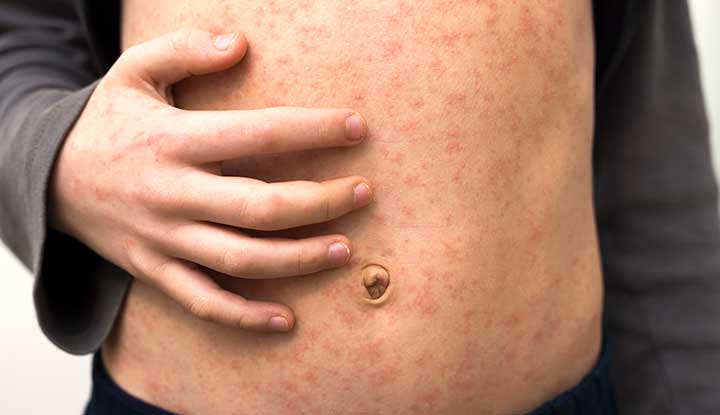In the past three months, there has been a notable increase in measles cases, with outbreaks identified in various locations including a migrant shelter in Chicago, an elementary school in southeast Florida, and a children’s hospital and day care in Philadelphia.
According to the Centers for Disease Control and Prevention (CDC), the United States has already documented 64 cases across 17 states as of Thursday, surpassing last year’s total of 59.
The majority of cases reported this year are linked to international travel, predominantly affecting children who have not received the measles, mumps, and rubella (MMR) vaccine. Despite the vaccine’s 97% effectiveness with two doses, the CDC has highlighted concerns regarding “pockets of low [vaccination] coverage” which increase the risk of outbreaks within communities.
In Chicago, where the case count reached 33 by Wednesday, with 22 cases involving children under age 5, the majority of infections are associated with an ongoing outbreak originating from a migrant shelter in the Pilsen neighborhood.
Pennsylvania reported nine cases from December to January, while Florida’s most recent case, recorded on Friday, brings the state’s total to 11. However, an outbreak linked to an elementary school in Broward County has been declared over by the Florida Health Department.
Though the rise in cases has sparked concerns among disease experts, the current situation does not approach the total from 2019, when the U.S. faced significant challenges to maintaining its measles elimination status, with many cases associated with outbreaks in Orthodox Jewish communities in New York.
Measles is highly contagious, with an infected person capable of spreading it to up to 90% of close contacts if they are not immune. Despite its elimination in the U.S. in 2000 due to widespread vaccination, occasional outbreaks still occur, mainly affecting unvaccinated individuals.
Typical symptoms of measles include fever, cough, pink eye, runny nose, and the development of tiny white spots in the mouth, followed by a blotchy rash that spreads across the body. Severe complications such as pneumonia, brain swelling, or secondary bacterial infections can occur, leading to hospitalization or even death.
Before the introduction of measles vaccines, thousands were hospitalized annually, with hundreds of deaths recorded each year in the U.S. Today, roughly 1 in 5 unvaccinated individuals with measles require hospitalization, and the disease can lead to fatal respiratory and neurological complications in 1 to 3 out of every 1,000 affected children, according to the CDC.
PREVIOUS NEWS: Measles on the Rise: CDC Sounds Alarm as Cases Rise in the U.S.
